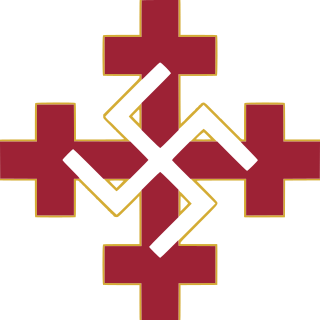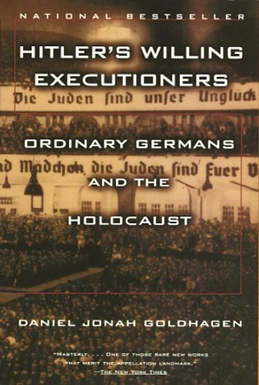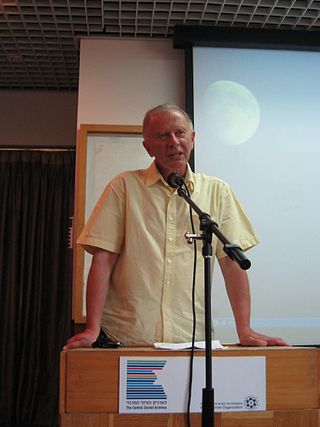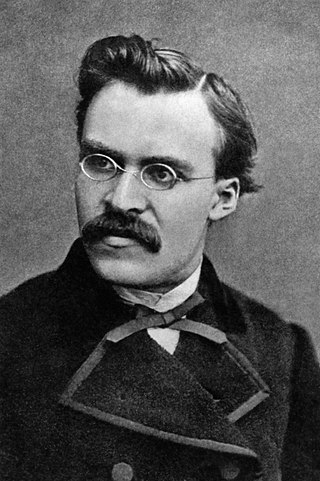Related Research Articles
Antisemitism is hostility to, prejudice towards, or discrimination against Jews. This sentiment is a form of racism, and a person who harbours it is called an antisemite. Primarily, antisemitic tendencies may be motivated by negative sentiment towards Jews as a people or by negative sentiment towards Jews with regard to Judaism. In the former case, usually presented as racial antisemitism, a person's hostility is driven by the belief that Jews constitute a distinct race with inherent traits or characteristics that are repulsive or inferior to the preferred traits or characteristics within that person's society. In the latter case, known as religious antisemitism, a person's hostility is driven by their religion's perception of Jews and Judaism, typically encompassing doctrines of supersession that expect or demand Jews to turn away from Judaism and submit to the religion presenting itself as Judaism's successor faith—this is a common theme within the other Abrahamic religions. The development of racial and religious antisemitism has historically been encouraged by the concept of anti-Judaism, which is distinct from antisemitism itself.
Some Christian Churches, Christian groups, and ordinary Christians express religious antisemitism toward the Jewish people and the associated religion of Judaism.

Carl Gustav Jung was a Swiss psychiatrist and psychoanalyst who founded analytical psychology. He was a prolific author, illustrator, and correspondent, and a complex and controversial character, presumably best known through his "autobiography" Memories, Dreams, Reflections.
Holocaust denial is an antisemitic conspiracy theory that asserts that the Nazi genocide of Jews, known as the Holocaust, is a myth, fabrication, or exaggeration. Holocaust denial involves making one or more of the following false claims:

Carl von Ossietzky was a German journalist and pacifist. He was the recipient of the 1935 Nobel Peace Prize for his work in exposing the clandestine German rearmament.
A number of organizations and academics consider the Nation of Islam (NOI) to be antisemitic. The NOI has engaged in Holocaust denial, and exaggerates the role of Jews in the African slave trade; mainstream historians, such as Saul S. Friedman, have said Jews had a negligible role. The NOI has repeatedly rejected charges made against it as false and politically motivated.

Friedrich Gustav Emil Martin Niemöller was a German theologian and Lutheran pastor. He is best known for his opposition to the Nazi regime during the late 1930s and for his widely quoted 1946 poem "First they came ...". The poem exists in many versions; the one featured on the United States Holocaust Memorial reads: "First they came for the socialists, and I did not speak out – because I was not a socialist. Then they came for the trade unionists, and I did not speak out – because I was not a trade unionist. Then they came for the Jews, and I did not speak out – because I was not a Jew. Then they came for me – and there was no one left to speak for me."

The Simon Wiesenthal Center (SWC) is a Jewish human rights organization established in 1977 by Rabbi Marvin Hier. The center is known for Holocaust research and remembrance, hunting Nazi war criminals, combating anti-Semitism, tolerance education, defending Israel, and its Museum of Tolerance.

Daniel Jonah Goldhagen is an American author, and former associate professor of government and social studies at Harvard University. Goldhagen reached international attention and broad criticism as the author of two books about the Holocaust: Hitler's Willing Executioners (1996), and A Moral Reckoning (2002). He is also the author of Worse Than War (2009), which examines the phenomenon of genocide, and The Devil That Never Dies (2013), in which he traces a worldwide rise in virulent antisemitism.

Analytical psychology is a term coined by Carl Jung, a Swiss psychiatrist, to describe research into his new "empirical science" of the psyche. It was designed to distinguish it from Freud's psychoanalytic theories as their seven-year collaboration on psychoanalysis was drawing to an end between 1912 and 1913. The evolution of his science is contained in his monumental opus, the Collected Works, written over sixty years of his lifetime.

The Völkisch movement was a German ethno-nationalist movement active from the late 19th century through to the dissolution of the German Reich in 1945, with remnants in the Federal Republic of Germany afterwards. Erected on the idea of "blood and soil", inspired by the one-body-metaphor, and by the idea of naturally grown communities in unity, it was characterized by organicism, racialism, populism, agrarianism, romantic nationalism and – as a consequence of a growing exclusive and ethnic connotation – by antisemitism from the 1900s onward. Völkisch nationalists generally considered the Jews to be an "alien people" who belonged to a different Volk from the Germans.
New antisemitism is the concept that a new form of antisemitism which developed in the late 20th and early 21st centuries, tends to manifest itself as anti-Zionism. The concept is included in some definitions of antisemitism, such as the working definition of antisemitism and the 3D test of antisemitism. The concept dates to the early 1970s, although the identification of anti-Zionism with antisemitism has "long been de rigueur in Jewish communal and broader pro-Israel circles".

Pērkonkrusts was a Latvian ultranationalist, anti-German, anti-Slavic, and antisemitic political party founded in 1933 by Gustavs Celmiņš, borrowing elements of German nationalism—but being unsympathetic to Nazism at the time—and Italian Fascism. It was outlawed in 1934, its leadership arrested, and Celmiņš eventually exiled in 1937. Still-imprisoned members were persecuted under the first Soviet occupation; some collaborated with subsequently invading Nazi Germany forces in perpetrating the Holocaust. Pērkonkrusts continued to exist in some form until 1944, when Celmiņš, who had initially returned to work in the occupying German administration, was imprisoned.

Organisation Consul (O.C.) was an ultra-nationalist and anti-Semitic terrorist organization that operated in the Weimar Republic from 1920 to 1922. It was formed by members of the disbanded Freikorps group Marine Brigade Ehrhardt and was responsible for political assassinations that had the ultimate goal of destroying the Republic and replacing it with a right-wing dictatorship. Its two most prominent victims were the former finance minister Matthias Erzberger and Foreign Minister Walther Rathenau. The group was banned by the German government in 1922.

Hitler's Willing Executioners: Ordinary Germans and the Holocaust is a 1996 book by American writer Daniel Goldhagen, in which he argues that the vast majority of ordinary Germans were "willing executioners" in the Holocaust because of a unique and virulent "eliminationist antisemitism" in German political culture which had developed in the preceding centuries. Goldhagen argues that eliminationist antisemitism was the cornerstone of German national identity, was unique to Germany, and because of it ordinary German conscripts killed Jews willingly. Goldhagen asserts that this mentality grew out of medieval attitudes rooted in religion and was later secularized.

Robert Solomon Wistrich was a scholar of antisemitism, considered one of the world's foremost authorities on antisemitism.

Esoteric Nazism, also known as Esoteric Fascism or Esoteric Hitlerism, refers to a range of mystical interpretations and adaptations of Nazism. After the Second World War, esoteric interpretations of the Third Reich were adapted into new religious movements of white nationalism and neo-Nazism. Theories suggest that high ranking Nazis believed in the use of Qabalah magic. They included beliefs in finding a mythical Hyperborea.

Friedrich Nietzsche's influence and reception varied widely and may be roughly divided into various chronological periods. Reactions were anything but uniform, and proponents of various ideologies attempted to appropriate his work quite early.
Joseph Ignatius Breen was an American film censor with the Motion Picture Producers and Distributors of America who applied the Hays Code to film production.
The February Revolution in Russia officially ended a centuries-old regime of antisemitism in the Russian Empire, legally abolishing the Pale of Settlement. However, the previous legacy of antisemitism was continued and furthered by the Soviet state, especially under Joseph Stalin. After 1948, antisemitism reached new heights in the Soviet Union, especially during the anti-cosmopolitan campaign, in which numerous Yiddish-writing poets, writers, painters and sculptors were arrested or killed. This campaign culminated in the so-called Doctors' plot, in which a group of doctors were subjected to a show trial for supposedly having plotted to assassinate Stalin. Although repression eased after Stalin's death, persecution of Jews would continue until the late 1980s.
References
- ↑ Sherry, Jay (2002). Maidenbaum, Aryeh (ed.). Jung and the Shadow of Anti-Semitism. Beriwck, ME: Nicolas-Hays. pp. 21–38.
- ↑ Maidenbaum, Aryeh (2002). Jung and the shadow of anti-Semitism. Berwick, ME: Nicolas-Hays. pp. 226–27. ISBN 0-89254040-0.
- ↑ Schoenl, William; Schoenl, Linda (September 2016). "Jung's views of Nazi Germany: the first year and Jung's transition: Jung's views of Nazi Germany". Journal of Analytical Psychology. 61 (4): 481–96. doi:10.1111/1468-5922.12238. PMID 27530169.